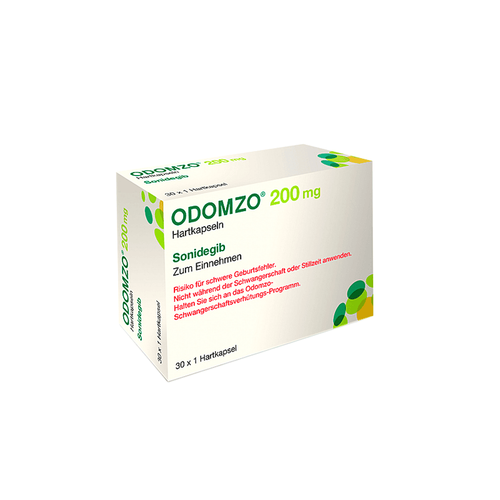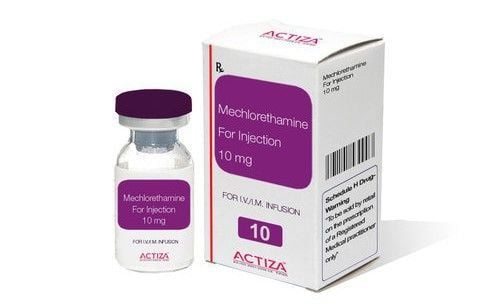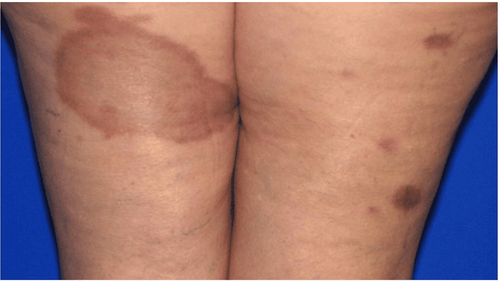This is an automatically translated article.
Skin biopsy is considered an essential method in the diagnosis of diseases in dermatology. It is important because thanks to this technique, doctors can accurately identify skin diseases, especially skin cancer, thereby giving the most appropriate and effective treatment for the patient.1. What is a skin biopsy?
Skin biopsy is a relatively simple procedure, commonly applied in the diagnosis of skin disorders, especially skin cancer. This method is done by taking a skin sample from 2-5mm in size to take for histopathological examination. Through a skin biopsy, the doctor can accurately diagnose or rule out certain skin diseases and other conditions.
2. Common types of skin biopsies
Depending on the condition of the disease as well as the suspected lesions, each patient will have a different skin biopsy method. This procedure usually has 3 main types, including:
2.1 Click biopsy This is the most commonly used method in diagnosing skin diseases. The doctor will use a small pen-shaped needle, with a size of about 2-4mm, then press a biopsy sample on the skin, ending the biopsy process with a stitch. However, if the biopsy wound is very small, it may not need stitches and the wound will still heal on its own.
2.2 Shaving Biopsy This is done using a set of razor-like tools to remove a small portion of the top layers of skin, or the epidermis and part of the dermis. This procedure does not require skin sutures.
2.3 Excisional Biopsy A surgical knife is used to remove all or an abnormal area of skin, including part of normal skin and through the fatty layer of skin. This method must require suturing the cut in the skin.
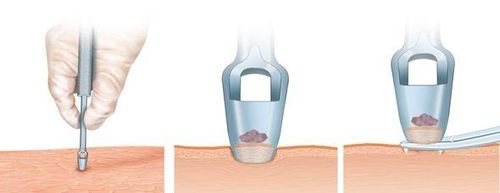
Tùy thuộc vào tình trạng bệnh mà sẽ có một phương pháp sinh thiết da khác nhau
3. Cases that need a skin biopsy
Skin biopsies are needed for the diagnosis and treatment of skin conditions, including:
Keratitis Dermatitis, Psoriasis and other inflammatory skin problems Pemphigoid bullous or blistering disorders of the skin Skin cancers, including squamous cell carcinoma and melanoma, and basal cell carcinoma. Skin infection Mole abnormal growth Warts
4. Procedure for performing skin biopsies
4.1 Preparing for a Skin Biopsy Before performing a skin biopsy, a patient should tell the doctor if:
Have been diagnosed with a bleeding disorder Have had a history of heavy bleeding after procedures other medical conditions Have or are taking blood thinners such as aspirin, medicines containing warfarin (Coumadin) or heparin; drugs that suppress the immune system such as diabetes medications used after an organ transplant. Depending on the location of the skin biopsy, you may be asked to change into a hospital gown. The nurse will then clean the area to be biopsied. The biopsy area can be marked with a surgical marker or marked with a pen.
Next, the doctor will give a local anesthetic to numb the biopsy site. You may feel a burning sensation in your skin for a few seconds after the anesthetic is injected.
4.2 While doing a skin biopsy The skin biopsy process usually takes about 15 minutes. Each type of skin biopsy will be done in a different way:
For a shave biopsy: The doctor will use a razor blade to cut the tissue. The depth of the incision will be based on the type of biopsy done and the area being biopsied. After the biopsy may cause bleeding. For press and excision biopsies: The doctor will use specialized tools to cut the top layer of subcutaneous fat, then finish with suturing to close the wound. To protect the wound and prevent bleeding, the patient will be covered with a bandage after the biopsy. 4.3 Skin Biopsy Results After completing the skin biopsy procedures, the skin sample will be sent to the laboratory for examination. Results can take days or weeks, depending on the complexity of the type of biopsy.
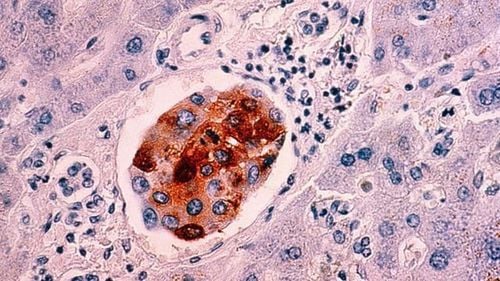
Sinh thiết da giúp bác sĩ chẩn đoán chính xác hoặc loại trừ một số bệnh về da và các bệnh lý khác
5. Caring for the wound to heal quickly
Some ways to care for a wound that heals quickly include:
Wash your hands thoroughly with hand sanitizer before touching the biopsy site to prevent bacterial infection from entering the site. with soap and water. In the case of a scalp biopsy, you can use shampoo to clean the wound. Use warm water to rinse to completely remove the remaining soap residue and avoid irritating the sensitive skin. Then pat dry with a clean towel. Change a clean bandage to protect the wound, help the wound heal quickly.
6. Risks of doing a skin biopsy
In general, a skin biopsy is a fairly safe procedure, and is not life-threatening. However, in some cases, complications still occur such as:
Bleeding profusely and with no sign of stopping Bruising the biopsy area Leaving a visible scar Infection Having an allergic reaction to antibiotics To To learn more about skin biopsy methods at Vinmec, you can contact Hotlines of hospitals, or register online HERE.
MORE:
The role of biopsy in diagnosing skin cancer Measures to diagnose skin cancer The more sun exposure, the darker the skin, why?




